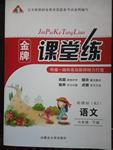题目内容
【题目】根据短文内容的理解,选择正确答案。 For many people. Leisure time is an opportunity to get outdoors, have some fun and meet interesting people. Add two pieces of advanced 21st century technology—global positioning system (GPS) devices and the Internet—to get "geocaching".
The word geocaching comes from "geo" (earth) and "cache" (hidden storage). Geocachers log onto a website to find information about the location of a cache—usually a waterproof plastic box containing small items such as toys and CDs—along with a notebook where "finders" can enter comments and learn about the cache "owner", the person who created and hid the cache. Finders may take any of the items in the cache but are expected to replace them with something of similar value. They then visit the website again and write a message to the owner.
Geocaching became possible on May 1,2000, when a satellite system developed by the U.S. Department of Defense was made public. Using an inexpensive GPS device, anyone on earth can send a signal to the satellites and receive information about their position. This is basically a high-tech version of orienteering, the traditional pastime which uses maps and compasses instead of GPS to determine one's location.
Geocachers are a very considerate group. Owners carefully choose a cache's location to give finders an enjoyable experience, such as a beautiful view or a good campsite. They also consider the environmental impact of their cache since it could result in an increased number of visitors to an area. As for the content of the caches, owners and finders must only use items that are suitable for the whole family, as caches are found by geocachers of all ages.
(1)According to the passage, geocaching is _______.
A.an outdoor leisure activity
B.a new type of technology
C.a game used to teach geography
D.a program to protect environment
(2)How can finders learn about the cache owners?
A.By meeting them.
B.By going to a website.
C.From the notebook.
D.From the satellite.
(3)Which of the following is NOT used in geocaching?
A.A GPS device.
B.A compass.
C.A plastic container.
D.The Internet.
(4)Which of the following is true according to the passage?
A.Most geocachers are adults.
B.Any item can be placed in the caches.
C.The caches should be put in a remote place.
D.Geocachers try to avoid damaging the environment.
【答案】
(1)A
(2)C
(3)B
(4)D
【解析】文章主要介绍了一种新型的geocaching,是增添了互联网和GPS定位系统,是一种户外的休闲活动。
(1)A推理判断题。根据第一段, leisure time is an opportunity to get outdoors, have some fun and meet interesting people.可知下文提到的 geocaching 是一种户外的休闲活动,故选A。
(2)C细节理解题。根据第二段along with a notebook where "finders" can enter comments and learn about the cache "owner"可知寻宝者可以通过"笔记本"来了解宝藏的主人,故选C。
(3)B细节理解题。根据第一段Add two pieces of advanced 21st century technology — global positioning system (GPS) devices and the Internet — to get "geocaching". 和第二段usually a waterproof plastic box containing small items such as toys and CDs 可知它使用了"GPS定位系统,互联网,塑料制的盒子",所以A,C,D选项都符合,而B选项"指南针"并没有提到,故选B。
(4)D推理判断题。根据.最后一段They also consider the environmental impact of their cache since it could result in an increased number of visitors to an area.可知他们还考虑了对环境的影响,因此D选项说Geocachers 尽量避免对环境的破坏符合,故选D。

 同步学典一课多练系列答案
同步学典一课多练系列答案 经典密卷系列答案
经典密卷系列答案 金牌课堂练系列答案
金牌课堂练系列答案